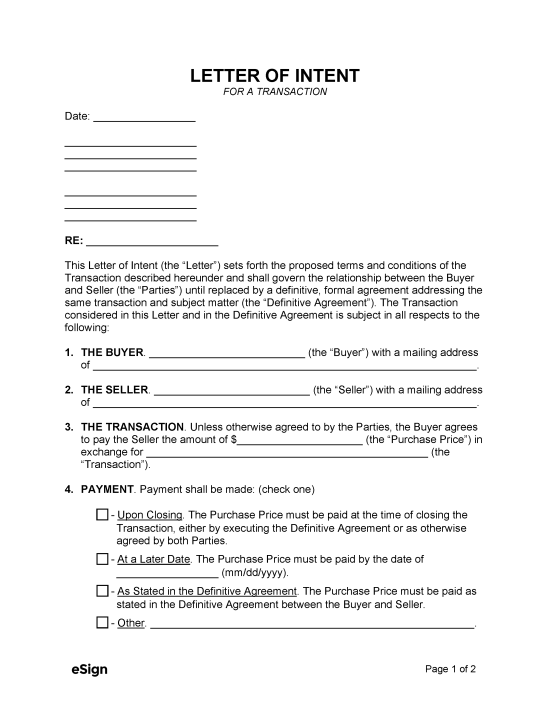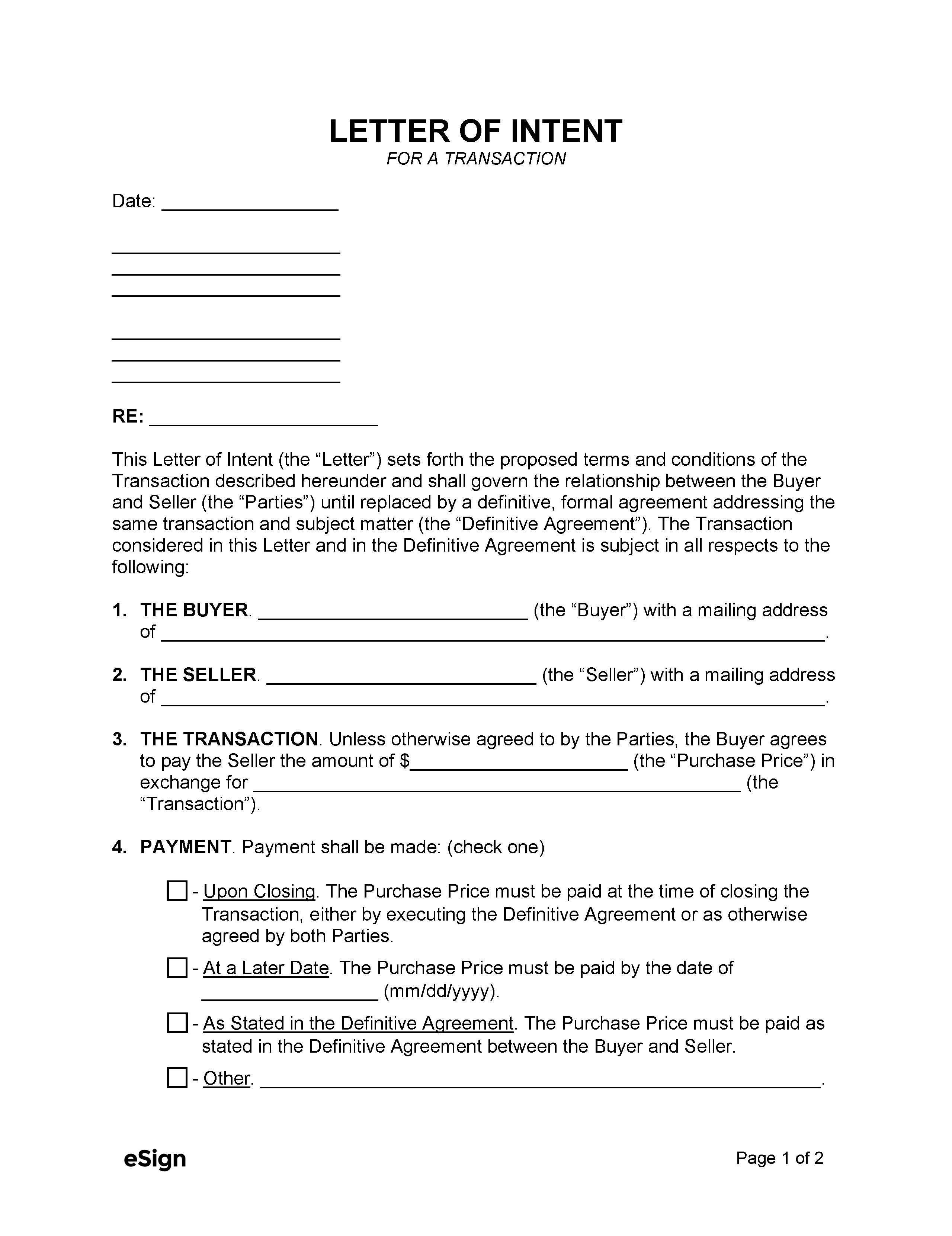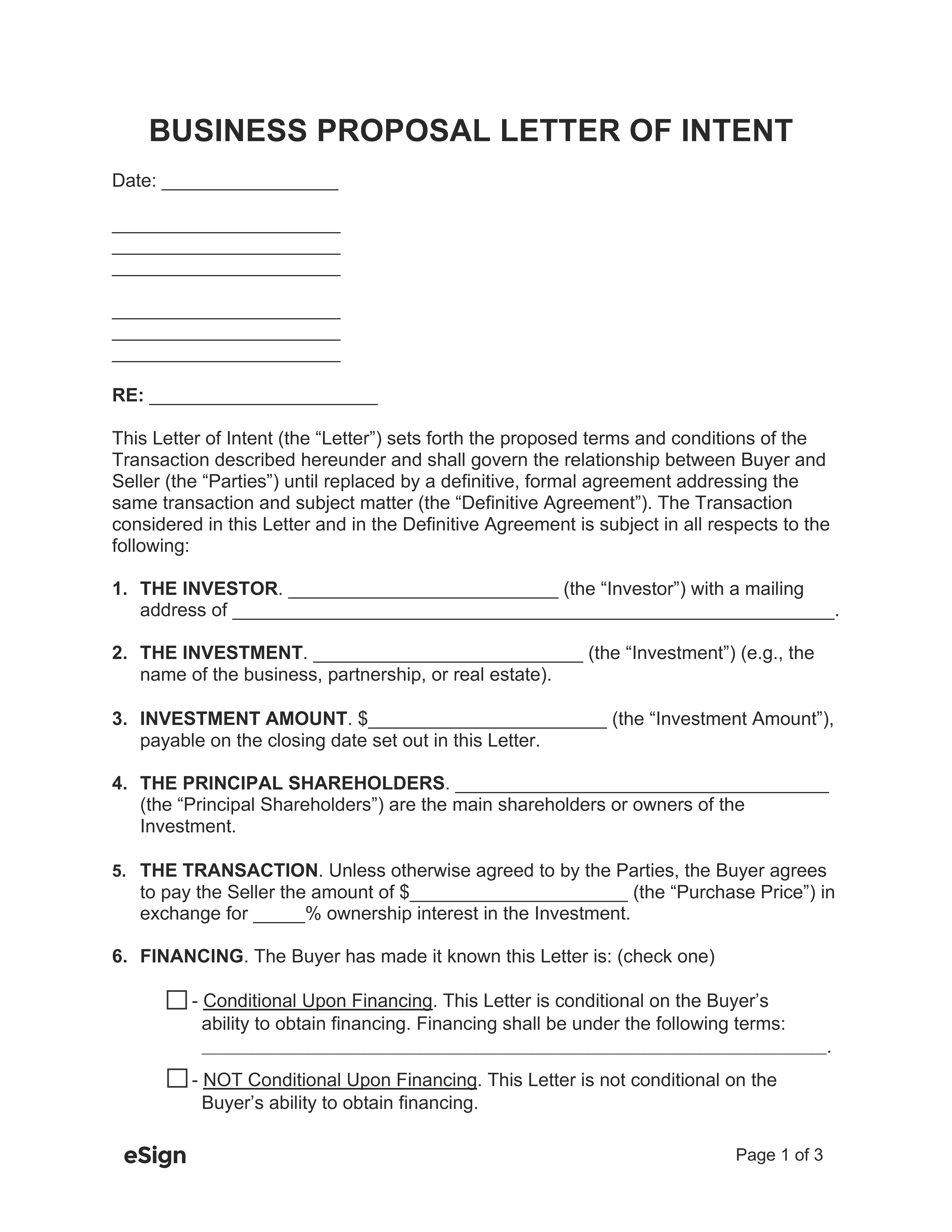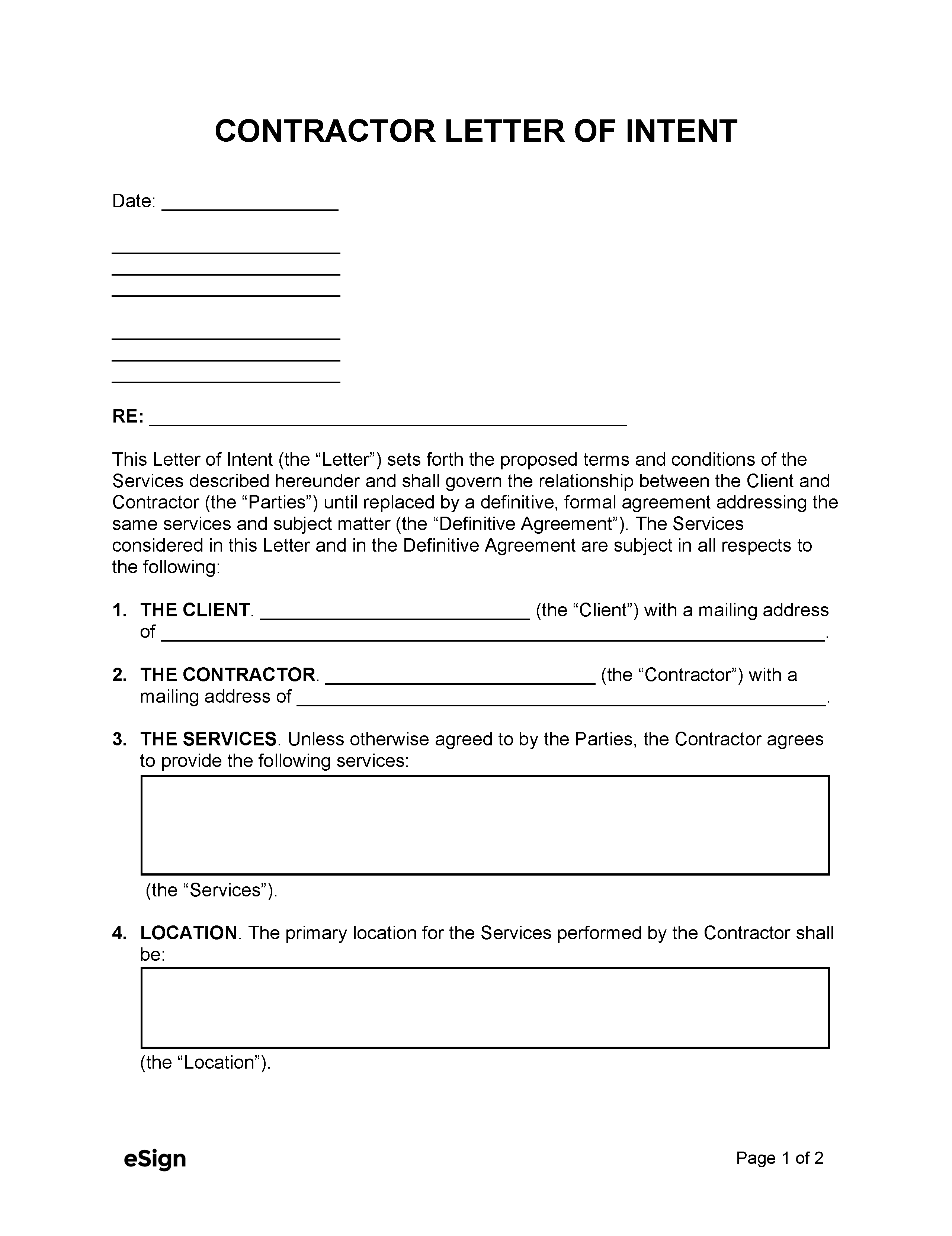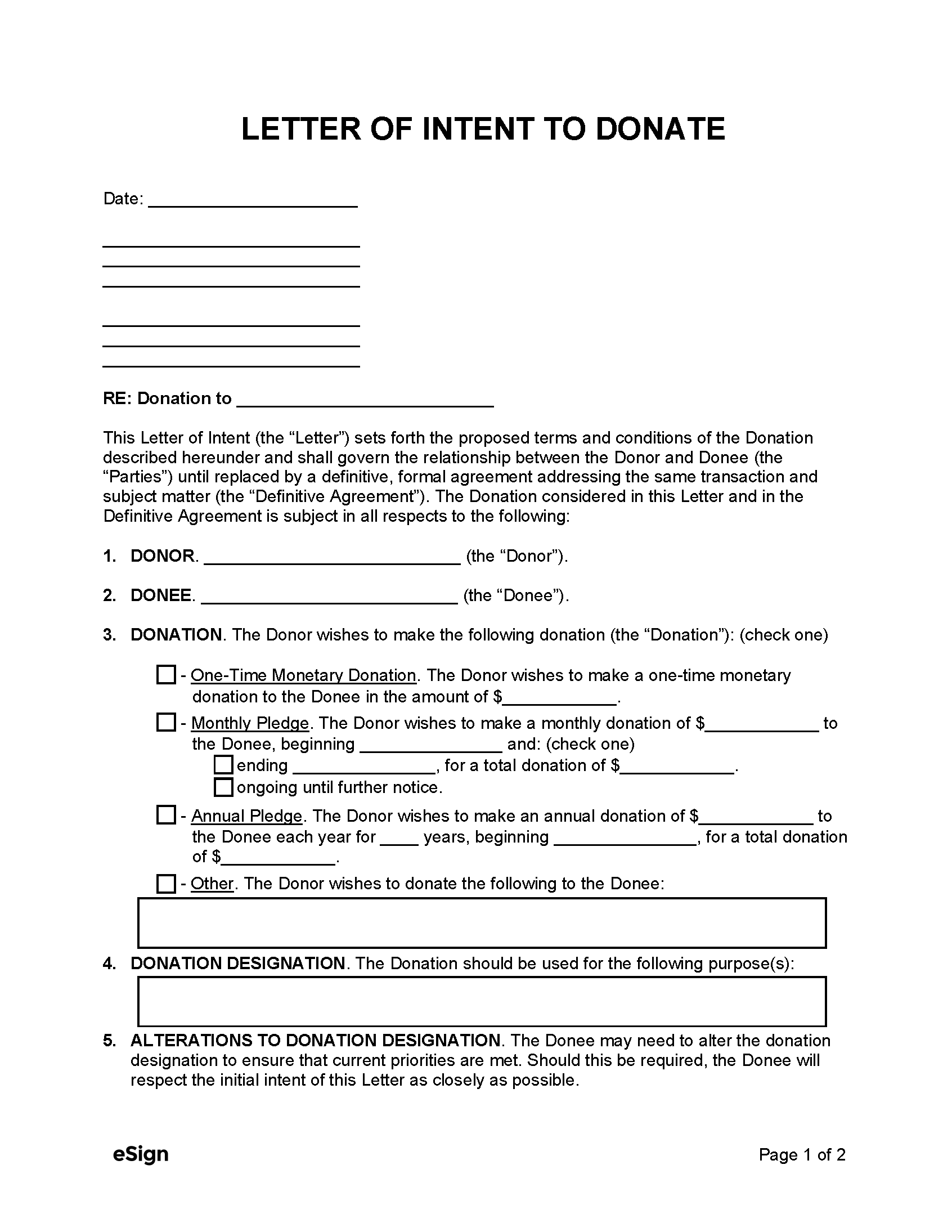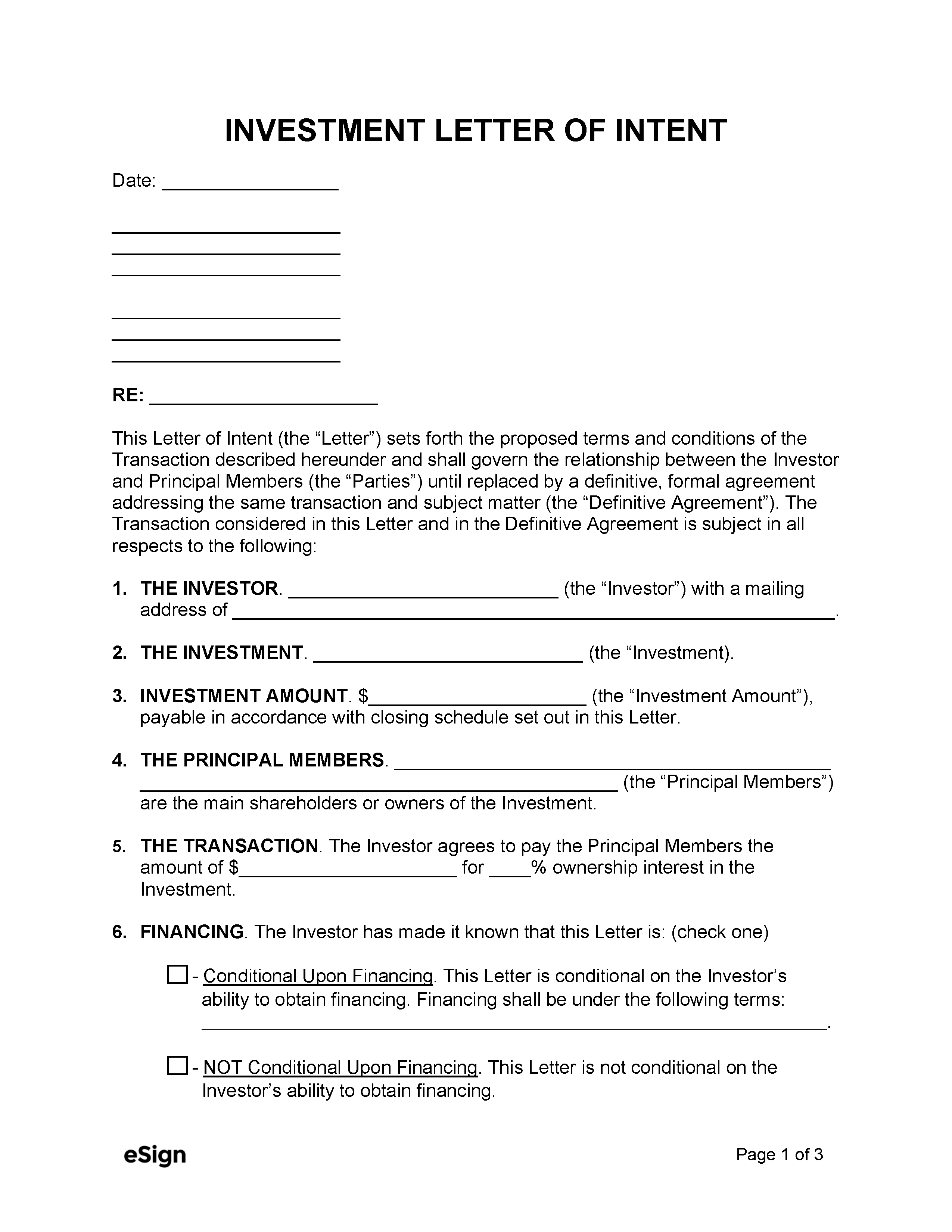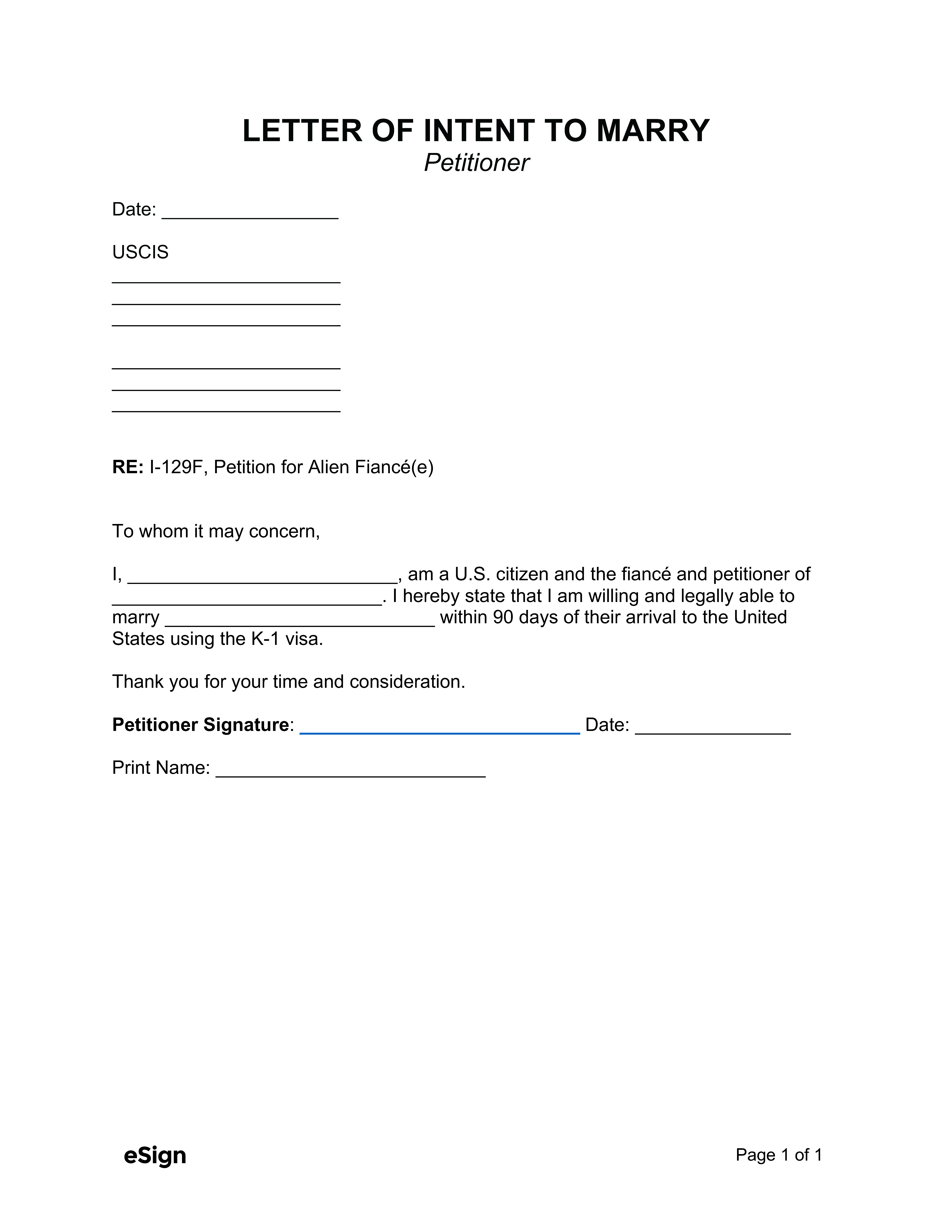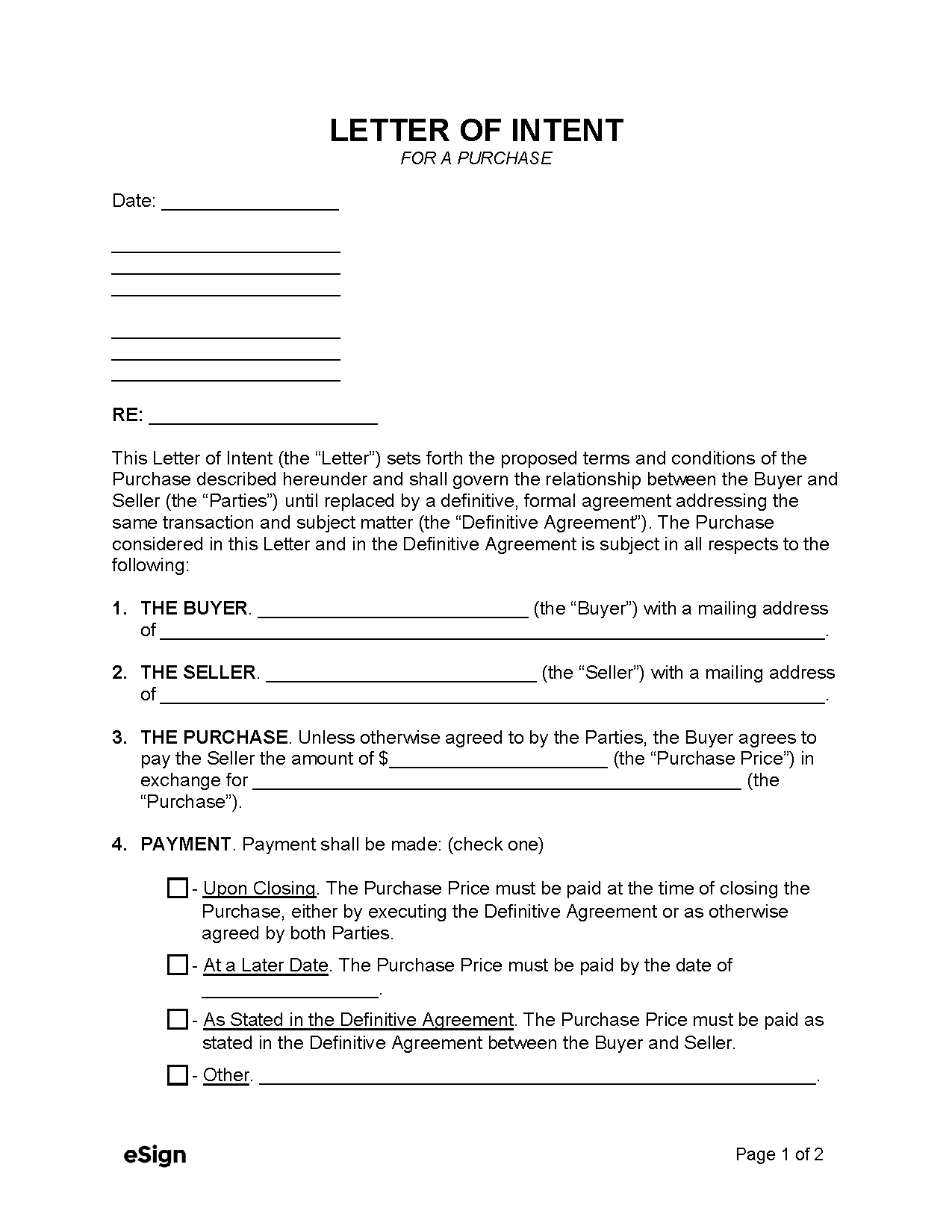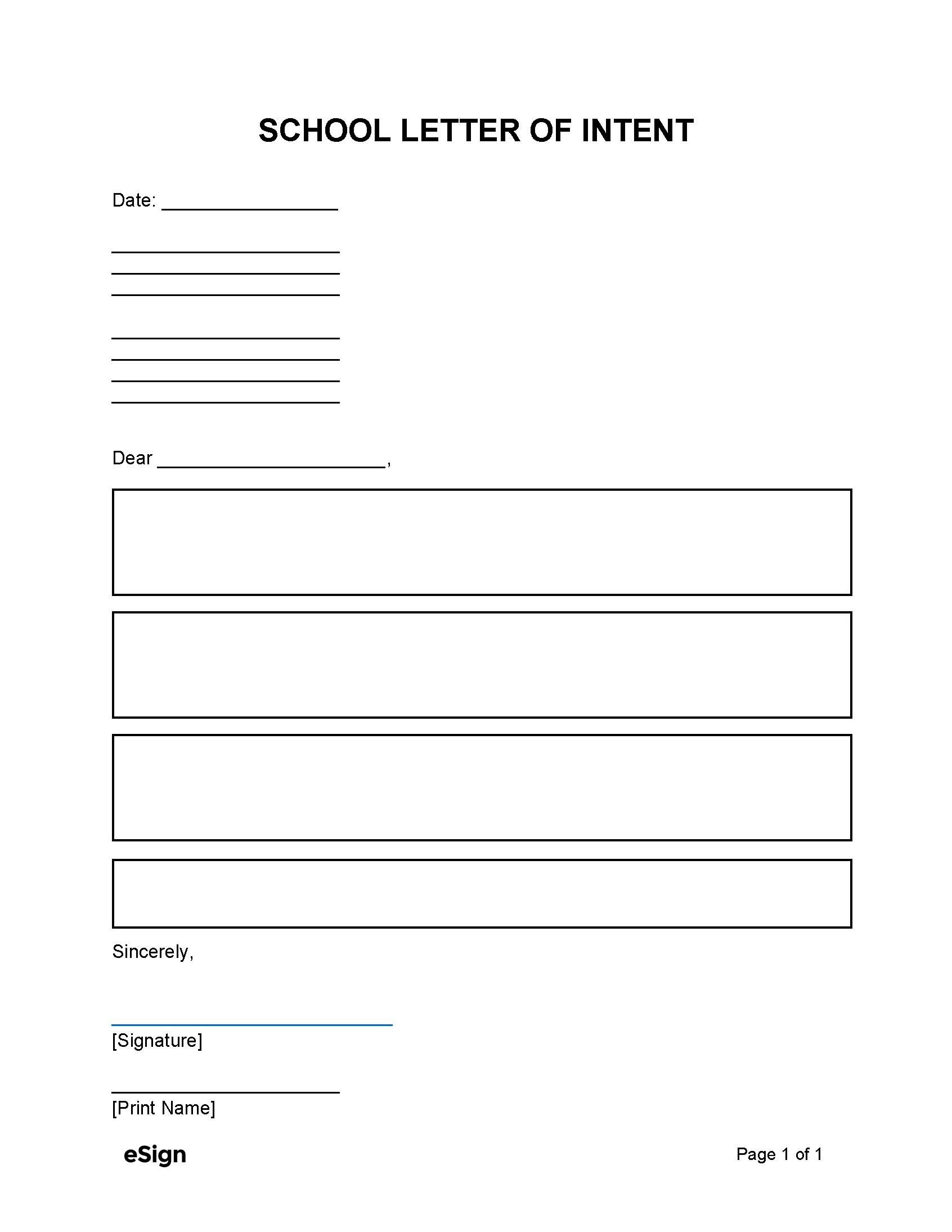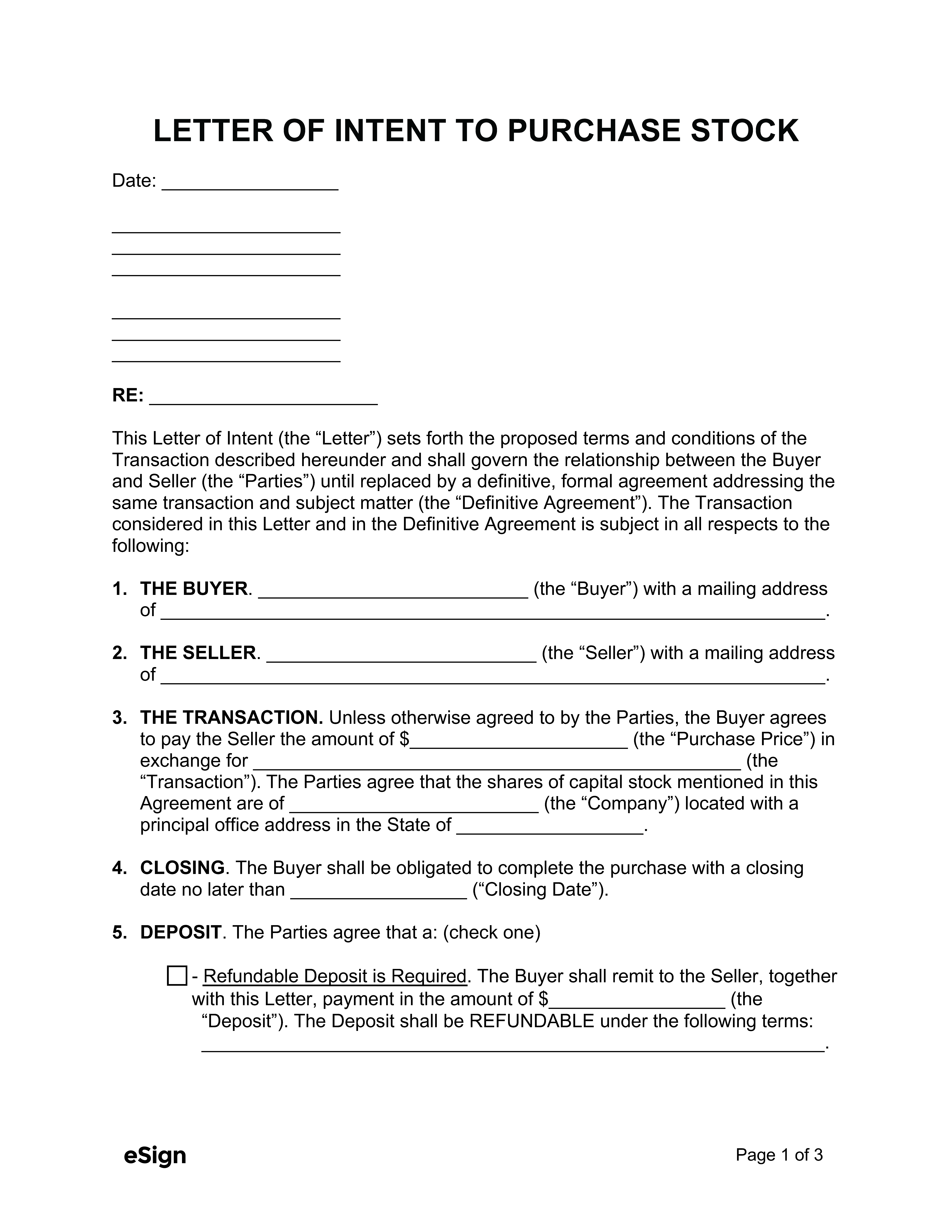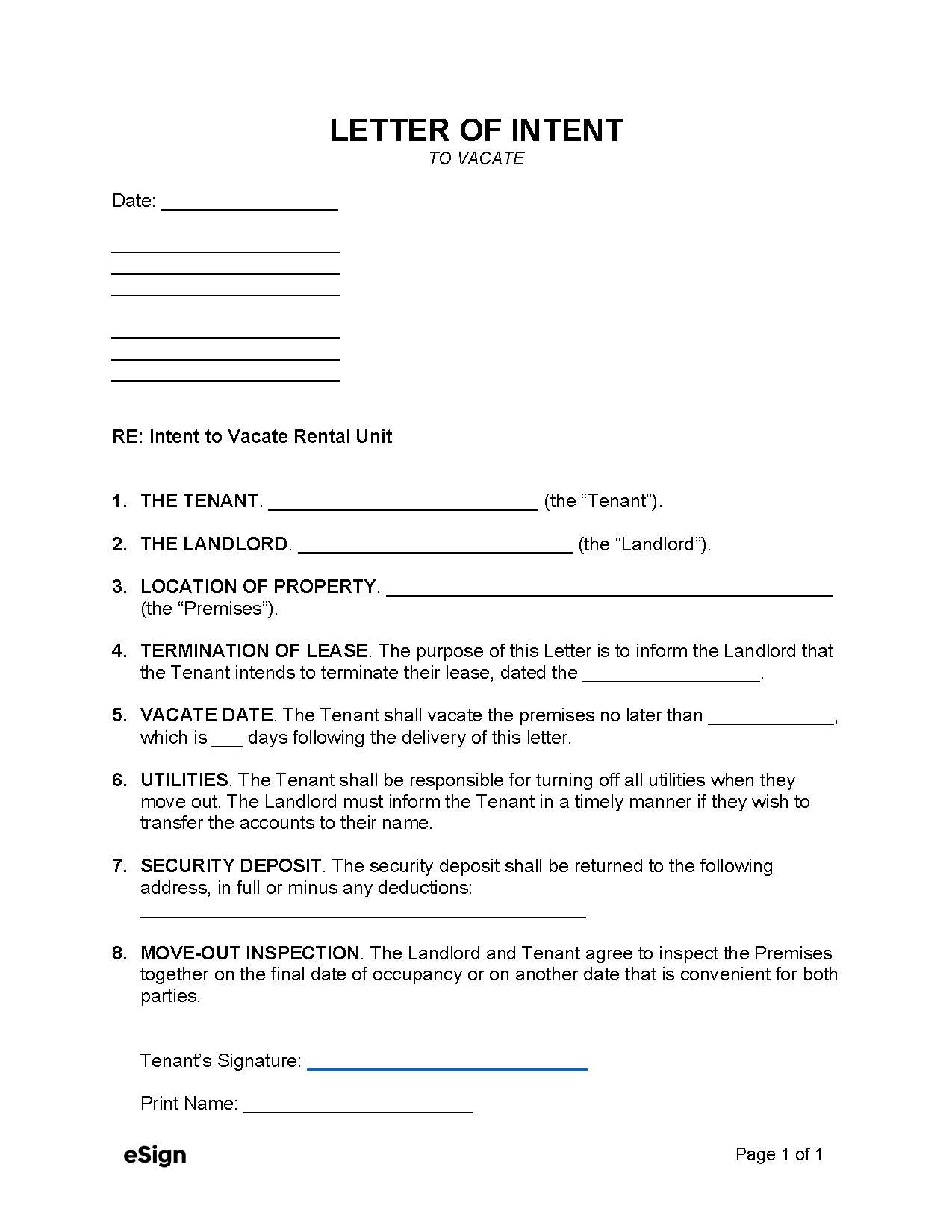By Type (14)
What to Include in a Letter of Intent
The components of a letter of intent vary greatly depending on the purpose of the form. Letters of intent for transactions (real estate, businesses, investments, donations, material items, etc.) are structured like a shortened contract proposal and often contain the following information:
- Parties – The names and mailing addresses of the buyer and seller.
- Property / Services – The goods or services the buyer receives in exchange for payment.
- Purchase Price – The amount the buyer would pay the seller for the goods or services.
- Payment Due Date – The date the buyer would be obligated to make payment (e.g., upon signing, by a specific date, etc).
- Deposit Contingency (Optional) – A deposit made at the time of signing to secure the buyer’s right to the services or goods.
- Financing Contingency (Optional) – Prevents the contract from moving forward unless the buyer can obtain financing. Often required if the goods or services are exceptionally valuable (i.e., real estate).
- Signatures – Having both parties sign a letter of intent proves that both parties are willing to enter into further discussions.
Sample
Download: PDF (Blank) | PDF (Sample Data)
LETTER OF INTENT
FOR A TRANSACTION
Date: [DATE]
[SENDER (e.g., BUYER) NAME]
[SENDER STREET ADDRESS]
[SENDER CITY, STATE, ZIP]
[RECIPIENT (e.g., SELLER) NAME]
[RECIPIENT STREET ADDRESS]
[RECIPIENT CITY, STATE, ZIP]
RE: [SUBJECT MATTER]
This Letter of Intent (the “Letter”) sets forth the proposed terms and conditions of the Transaction described hereunder and shall govern the relationship between the Parties to this Letter until replaced by a definitive, formal agreement addressing the same transaction and subject matter (the “Definitive Agreement”). The Transaction considered in this Letter and in the Definitive Agreement is subject in all respects to the following:
1. THE BUYER. [BUYER NAME] (the “Buyer”) with a mailing address of [ADDRESS].
2. THE SELLER. [SELLER NAME] (the “Seller”) with a mailing address of [ADDRESS].
3. TRANSACTION. Unless otherwise agreed to by the Parties, the Buyer agrees to pay the Seller the amount of $[PURCHASE PRICE] (the “Purchase Price”) in exchange for [GOODS/SERVICES]. (the “Transaction”).
4. PAYMENT. Payment shall be made as follows: [DESCRIBE MANNER OF PAYMENT].
5. DEPOSIT. The Parties agree that a deposit is [WRITE “required” OR “not required”]. If required, the Buyer shall remit a [WRITE “refundable” OR “non-refundable”] deposit of $[DEPOSIT AMOUNT].
Note: If a deposit is not required, delete the sentence after “If required” above.
6. FINANCING. The Buyer has made it known that this Letter is [WRITE “conditional” OR “not conditional”] upon the Buyer’s ability to obtain financing. If conditional, financing shall be under the following terms: [DESCRIBE CONDITIONAL TERMS].
Note: If the letter is not conditional, delete the sentence after “If conditional” above.
7. INTENTION OF THE PARTIES. This Letter sets forth the intentions of the parties to use reasonable efforts to negotiate, in good faith, a Definitive Agreement with respect to all matters herein. Notwithstanding paragraphs 5 through 9, which shall be legally binding, any legal obligations with respect to all other matters shall only arise if and when the Parties execute and deliver a Definitive Agreement.
8. GOVERNING LAW. This Letter shall be governed under the laws of the State of [STATE NAME].
9. SIGNATURES.
Seller Signature: ___________________ Date: [MM/DD/YYYY]
Print Name: [SELLER NAME]
Buyer Signature: ___________________ Date: [MM/DD/YYYY]
Print Name: [BUYER NAME]
Purpose of an LOI
A letter of intent can be a simple document that is used as the precursor to a business transaction or other type of professional negotiations, or it can be used in conjunction with a job or school application. In all cases, the letter communicates one or both parties’ intentions to achieve a specific goal or settlement.
Business vs. Employment/Education
Binding vs. Non-Binding
The main function of a letter of intent is to commence negotiations without entering into an extensive, binding agreement. Therefore, drafting a letter with binding and non-binding provisions holds the parties to certain promises but leaves room for more negotiation.
The parties may wish to make the letter of intent completely binding, but all the necessary terms pertaining to the transaction must be included in the document, not unlike a full purchase agreement.
